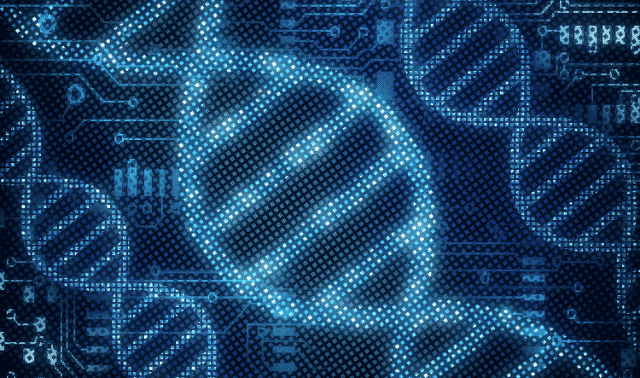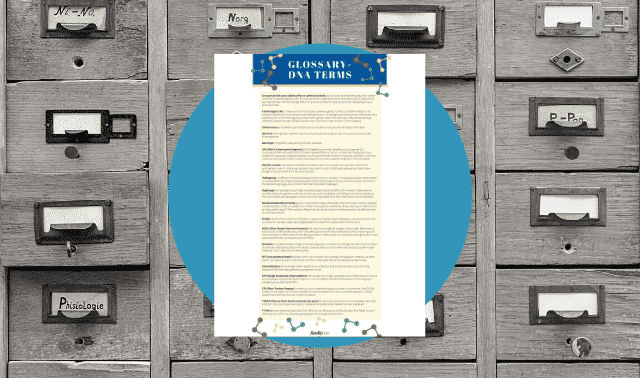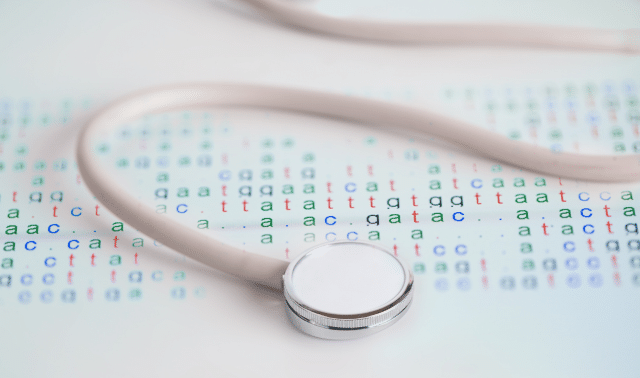Sign up for the Family Tree Newsletter Plus, you’ll receive our 10 Essential Genealogy Research Forms PDF as a special thank you!
Get Your Free Genealogy Forms
"*" indicates required fields

What’s the difference between X-DNA and mtDNA?
Q: I understand that mitochondrial DNA (mtDNA) documents the maternal line—mother’s mother’s mother and so on. Since a man has his mother’s mtDNA and passes on an X chromosome to his daughter, would the daughter’s DNA results reflect mtDNA from his side of the family?
A: This confusion between X-chromosome DNA (X-DNA) and mtDNA is common. Most people understand that mtDNA and X-DNA both have something to do with our moms. But in our bodies and in genetic genealogy research, X-DNA and mtDNA serve different purposes. Here’s why:
X-DNA: Your XDNA is part of the tiny package of genetic information housed in the center—the nucleus—of every cell in your body.
You get one copy of each of your mother’s chromosomes numbered 1 through 22. Her No. 23 chromosome donation to you is always an X. Your dad also gives you a copy of each of his chromosomes 1 to 22. If you’re a woman, his chromosome No. 23 donation is an X. If you’re a man, you get your father’s Y chromosome instead.
MtDNA: Your mtDNA, on the other hand, isn’t found alongside your chromosomes. Instead, it lives independently with its own DNA outside the nucleus of your cell. We all started as just one cell, actually as one half of a cell: the egg. The egg that your mom made was painstakingly packaged not just with the 23 chromosomes she gave you, but also with some mitochondria to help with all that cell division needed right after fertilization. Isn’t your mother thoughtful? Both sons and daughters receive mtDNA from their mothers. But a man doesn’t pass on this gift to his offspring. Therefore, his daughter’s mtDNA won’t tell you anything about him.
So how do these different types of DNA fit into your family history? You’re correct that you can test your mtDNA to learn about your direct maternal line (Family Tree DNA is the only major testing company that provides this test). Because we all have our mother’s mtDNA, anyone can take an mtDNA test to learn about maternal-line origins—and sometimes about family history. Your origins information is provided in the form of an mtDNA haplogroup assignment. This is just a set of letters and numbers, such as H1a1a2b, that describes where your ancestor may have been thousands of years ago. You also get a list of people who have the same mtDNA profile as you do. Unlike autosomal DNA matches, your mtDNA matches don’t necessarily share a recent ancestor with you. Because mtDNA rarely mutates, there’s no good way to tell if a match is your second cousin or your 22nd cousin.
If you share X-DNA with a match, though, the unique inheritance pattern can help you narrow down which ancestors you have in common.
Your X-DNA is tested as part of your autosomal DNA, but not every testing company uses or reports the results. If you want to take a good look at your X-DNA, you’ll need to either take the Family Finder test at Family Tree DNA or upload test results from any company to the GEDmatch website.
From the December 2017 issue of Family Tree Magazine.
Related Reads
ADVERTISEMENT







